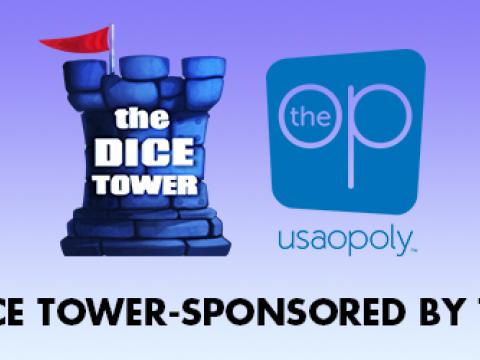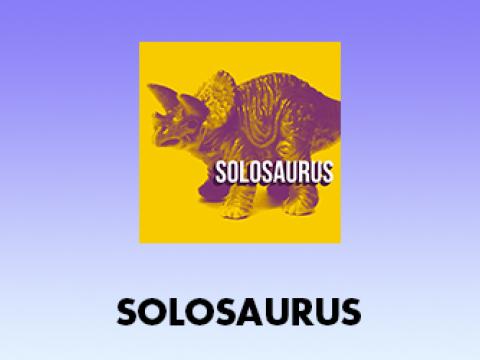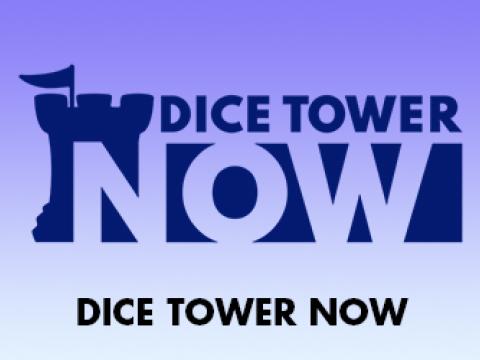
In this episode, Tom and Eric discuss Unlock: Mythic Adventures, Cantaloop, Via Magica, Sleeping Gods, and Lucky Numbers. Geoff begins a series on Solo games, we have a new Tale of Boardgaming Horror, and we attempt to assemble a Top Ten Games that start with X.

This episode, "Great Western Trail" gets a Great Western Trilogy, the "Terraforming Mars" card game hits Kickstarter, dungeon crawlers become much more tiny and epic, and "On Mars" gets an expansion. Plus Barry Figrim gives business-based board game advice in The Board Room.
TOP STORIES:
- IDW fires Pete Walsh and cancels "Metal Gear Solid."
- "Summoner Wars (2nd Edition)" dated by Plaid Hat Games.
- "Great Western Trail" Trilogy announced by Plan B.
- "Paper Dungeons: A Dungeon Scrawler" coming from Alley Cat Games.
- "A Noble War" announced by Guildhall Games.
- "Cape May" announced by Thunderworks Games.
- "The Game: Face to Face" coming to the US from Pandasaurus.
- "Uno Remix," a “legacy Uno” announced.
- "Paris" being reprinted with expansion in 2021 Kickstarter.
- Two new game announcements from Pinchback and Riddle.
- "Tiny Epic Dungeons" from Gamelyn Games heading to Kickstarter.
- First Expansion for Vital Lacerda’s "On Mars" detailed.
THE HOTNESS:
- Great Western Trail
- Tiny Epic Dungeons
- Stroganov
- Hansa Teutonica
- Red Rising
- Terraforming Mars: Ares Project
KICKSTARTERS:
- Core Words: Empires & Nemesis
- Moon Adventure, In a Grove and Dokojong
- Clinic: Deluxe Edition - 2nd & 3rd Extensions
- Doom Machine
- Cult of the Deep
- Shadow Tactics
- Terraforming Mars: Ares Expedition
- Zombicide: Undead or Alive
NEW & UPCOMING RELEASES:
- "Cubitos" from AEG
- "Overboss: A Boss Monster Adventure" from Brotherwise Games
- "Island Siege: Second Edition" from APE Games
SPECIAL REPORT:
- Barry describes getting a competitive advantage in The Board Room.
CONNECT:
- Follow our curated Twitter newsfeed @DiceTowerNow.
- Dig in with Corey at DiceTowerDish.com.
- Have a look-see at Barry’s wares at BrightBearLaser.com.
- Check out the Tabletop Game Talk podcast with Chris and Kitty.

This episode, "Great Western Trail" gets a Great Western Trilogy, the "Terraforming Mars" card game hits Kickstarter, dungeon crawlers become much more tiny and epic, and "On Mars" gets an expansion. Plus Barry Figrim gives business-based board game advice in The Board Room.
TOP STORIES:
- IDW fires Pete Walsh and cancels "Metal Gear Solid."
- "Summoner Wars (2nd Edition)" dated by Plaid Hat Games.
- "Great Western Trail" Trilogy announced by Plan B.
- "Paper Dungeons: A Dungeon Scrawler" coming from Alley Cat Games.
- "A Noble War" announced by Guildhall Games.
- "Cape May" announced by Thunderworks Games.
- "The Game: Face to Face" coming to the US from Pandasaurus.
- "Uno Remix," a “legacy Uno” announced.
- "Paris" being reprinted with expansion in 2021 Kickstarter.
- Two new game announcements from Pinchback and Riddle.
- "Tiny Epic Dungeons" from Gamelyn Games heading to Kickstarter.
- First Expansion for Vital Lacerda’s "On Mars" detailed.
THE HOTNESS:
- Great Western Trail
- Tiny Epic Dungeons
- Stroganov
- Hansa Teutonica
- Red Rising
- Terraforming Mars: Ares Project
KICKSTARTERS:
- Core Words: Empires & Nemesis
- Moon Adventure, In a Grove and Dokojong
- Clinic: Deluxe Edition - 2nd & 3rd Extensions
- Doom Machine
- Cult of the Deep
- Shadow Tactics
- Terraforming Mars: Ares Expedition
- Zombicide: Undead or Alive
NEW & UPCOMING RELEASES:
- "Cubitos" from AEG
- "Overboss: A Boss Monster Adventure" from Brotherwise Games
- "Island Siege: Second Edition" from APE Games
SPECIAL REPORT:
- Barry describes getting a competitive advantage in The Board Room.
CONNECT:
- Follow our curated Twitter newsfeed @DiceTowerNow.
- Dig in with Corey at DiceTowerDish.com.
- Have a look-see at Barry’s wares at BrightBearLaser.com.
- Check out the Tabletop Game Talk podcast with Chris and Kitty.

In this episode we chat about Judge Dredd Helter Skelter (a Wildlands Game), Wolle - Volle Weide - Honeymoon - Hamstern roll and writes, Maglev Metro, and 111 Ants. We also serve up a "non-dexterity games that build up" Game Pie.

This episode, Barry is back! Asmodee gets into the arcade business, Zombicide goes West, and Corey takes over the airwaves. Plus, the finale of a board game horror story.
TOP STORIES:
- Asmodee purchases Board Game Arena.
- Designers Sorentino, Acquati, and Luciani purchase majority stake in Cranio Creations.
- The Witcher: Old World Announced.
- Zombicide: Undead or Alive coming to Kickstarter from CMoN.
- Gravwell second edition slinging to stores soon.
- 4th Villainous standalone sequel Despicable Plots announced.
- Renegade announces Aggretsuko: Work/Rage Balance.
Three new Games Workshop games announced. - Gale Force 9 and Wizards of the Coast Settle regarding Dungeons and Dragons.
- Hasbro reveals board games earnings report for 2020.
KICKSTARTERS:
- Cora Quest
- Zodiac War
- Jungle Tribe
- The Pratzen: Austerlitz, 1805
- Posthuman Saga
- Defcon 1
- Mob – Big Apple
- Human Punishment: The Beginning
- Kingdom Rush: Elemental Uprising
NEW & UPCOMING RELEASES:
- Waddle from Wizkids
- Renature from Capstone Games
- UNLOCK! Mythic Adventures from Space Cowboys
- Marvel Champions: TCG - Quicksilver Hero Pack from Fantasy Flight
- Treasure Island: Captain Silver Revenge Island Expansion from Matagot
SPECIAL REPORT:
- Corey presents the 4th and final chapter of a game designer’s true horror story.
CONNECT:
- Follow our curated Twitter newsfeed @DiceTowerNow.
- Dig in with Corey at DiceTowerDish.com.
- Have a look-see at Barry’s wares at BrightBearLaser.com.
- Check out the Tabletop Game Talk podcast with Chris and Kitty.

This episode, Barry is back! Asmodee gets into the arcade business, Zombicide goes West, and Corey takes over the airwaves. Plus, the finale of a board game horror story.
TOP STORIES:
- Asmodee purchases Board Game Arena.
- Designers Sorentino, Acquati, and Luciani purchase majority stake in Cranio Creations.
- The Witcher: Old World Announced.
- Zombicide: Undead or Alive coming to Kickstarter from CMoN.
- Gravwell second edition slinging to stores soon.
- 4th Villainous standalone sequel Despicable Plots announced.
- Renegade announces Aggretsuko: Work/Rage Balance.
Three new Games Workshop games announced. - Gale Force 9 and Wizards of the Coast Settle regarding Dungeons and Dragons.
- Hasbro reveals board games earnings report for 2020.
KICKSTARTERS:
- Cora Quest
- Zodiac War
- Jungle Tribe
- The Pratzen: Austerlitz, 1805
- Posthuman Saga
- Defcon 1
- Mob – Big Apple
- Human Punishment: The Beginning
- Kingdom Rush: Elemental Uprising
NEW & UPCOMING RELEASES:
- Waddle from Wizkids
- Renature from Capstone Games
- UNLOCK! Mythic Adventures from Space Cowboys
- Marvel Champions: TCG - Quicksilver Hero Pack from Fantasy Flight
- Treasure Island: Captain Silver Revenge Island Expansion from Matagot
SPECIAL REPORT:
- Corey presents the 4th and final chapter of a game designer’s true horror story.
CONNECT:
- Follow our curated Twitter newsfeed @DiceTowerNow.
- Dig in with Corey at DiceTowerDish.com.
- Have a look-see at Barry’s wares at BrightBearLaser.com.
- Check out the Tabletop Game Talk podcast with Chris and Kitty.

In this episode, Tom, Mandi, and Eric discuss Seastead, Hadrian's Wall, Forgotten Waters, After the Empire, Box One, and Canvas. Geoff gives us tips for lining up. We have a Tale of Boardgaming Horror, and we finish the show with a look back at the games from ten years ago, 2011.